Sony A95L is a TV that has made a huge impression on us. Although a year has passed since its launch, it still deserves a spot among the best models on the market. When it comes to picture quality, it's simply brilliant. Deep blacks, vibrant colours, and excellent brightness in HDR make everything look incredibly realistic. The QD-OLED panel does its job – movies and games look so good that at times you forget it's just a screen. Using the A95L on a daily basis is a pleasure. Google TV runs smoothly, and there are plenty of apps available. The package includes two remote controls: one traditional and the other backlit – a really handy solution, especially in the evenings. Plus, the voice assistant makes life easier, allowing you to quickly search for a movie or control the home from the couch. Gamers will also be delighted. A refresh rate of 120 Hz, low input lag (below 10 ms even in Dolby Vision), and VRR support is a set that will satisfy any gaming enthusiast. And the sound? The Acoustic Surface Audio+ system makes the sound come straight from the screen, providing great, spatial experiences. Of course, there are no perfect things. Two HDMI 2.1 ports (including one for eARC) might be a bit limiting if someone wants to connect a console, soundbar, and other devices. In a bright room, the black can have a slightly cherry hue, which might bother more demanding users. Despite these minor notes, the Sony A95L is a piece of fantastic equipment. The picture, sound, and functionality are top-notch. It's a television that will satisfy both cinephiles and gamers, offering a true premium experience in the comfort of home.
- Matching (Score)
- Our verdict
- TV appearance
- Where to buy
- Contrast and black detail
- HDR effect quality
- Factory color reproduction
- Color reproduction after calibration
- Smoothness of tonal transitions
- Image scaling and smoothness of tonal transitions
- Blur and motion smoothness
- Console compatibility and gaming features
- Input lag
- Compatibility with PC
- Viewing angles
- Daytime performance
- Panel details
- TV features
- Apps
- Playing files from USB
- Sound
Sony A95L vs Sony Bravia 8 MK2
Direct comparison
Check the best price offer:
Sony Bravia 8 MK2A95L
Bravia 8 II / XR8M


Panel type: QD-OLED
Resolution: 3840x2160
System: Google TV
Model year: 2023
Complete the survey to find out the result

Panel type: QD-OLED
Resolution: 3840x2160
System: Google TV
Model year: 2025
Complete the survey to find out the result

Overall rating
8.3
8.5
Movies and series in UHD quality
9.0
9.1
Classic TV, YouTube
9.3
9.4
Sports broadcasts (TV and apps)
9.0
9.0
Gaming on console
9.3
9.3
TV as a computer monitor
5.0
7.6
Watching in bright light
5.4
5.6
Utility functions
8.8
8.9
Apps
9.6
9.6
Sound quality
7.9
8.5
Complete the survey to find out what fits your preferences
Advantages
Amazing Contrast
Great for HDR movies
Advanced Google TV system
Great Viewing Angles
Gaming Features: Support for ALLM, VRR, 120 Hz refresh rate, low input lag
Great sound
Camera included
Amazing Contrast and Black
High brightness in HDR content
Great motion smoothness: QD-OLED 120Hz display
Many features for gamers VRR, ALLM, HGIG, GameBar
Top-notch digital image processing quality (XR Processor)
A multitude of apps on GoogleTV
Two remotes included
Phenomenal sound with DTS and Dolby Atmos audio support
Disadvantages
Only Two HDMI 2.1 Ports: One of the HDMI 2.1 ports is used for eARC, which may limit the number of devices that can be connected, especially for those using a soundbar and console
Cherry black effect in bright light: The QD-OLED panel causes blacks to lose their depth in bright light
Not the sleekest design
Price compared to competitors
Only Two HDMI 2.1 Ports: One of the HDMI 2.1 ports is used for eARC (Soundbar)
Cherry black effect in bright light: The QD-OLED panel causes blacks to lose their depth in strong light
Average brightness in SDR mode (competition in this price range can do a lot more)
Missing additional smoothness modes for PC gamers
Our verdict
Sony Bravia 8 II is undoubtedly a worthy successor to the A95L – polished, extremely versatile, and with several noticeable improvements over its predecessor. The quality of the image, sound, and overall user experience places this model among the top premium televisions of 2025. It's a device that can captivate both movie enthusiasts and demanding gamers. One of its biggest advantages is the nearly perfect picture, where the XR processor subtly yet effectively enhances detail and smoothness without overstepping its bounds with the source material. To top it off, there’s the phenomenal Acoustic Surface sound, creating the impression that dialogues and effects come directly from the screen. Google TV operates very smoothly, offering a vast selection of apps, and additional features – like the ability to play in the cloud on a PlayStation console or access to Bravia Core – elevate the device's value. There’s also no shortage of low input lag, variable refresh rate, and full support for modern HDR formats.
Nevertheless, in this barrel of honey, there are a few spoonfuls of tar. The lack of refresh rates above 120 Hz, only two HDMI 2.1 ports, and mediocre performance in daylight are shortcomings that should not exist in a television of this class in 2025. And while for many these may not be deal-breaking flaws, the competition in the super premium segment is becoming increasingly stronger and more uncompromising. Will these shortcomings make it harder for the Bravia 8 II to win over customers' wallets? That’s for you to assess, the market… and sales figures. Regardless, the Bravia 8 II is a phenomenal product that would definitely be hard not to recommend.
TV appearance




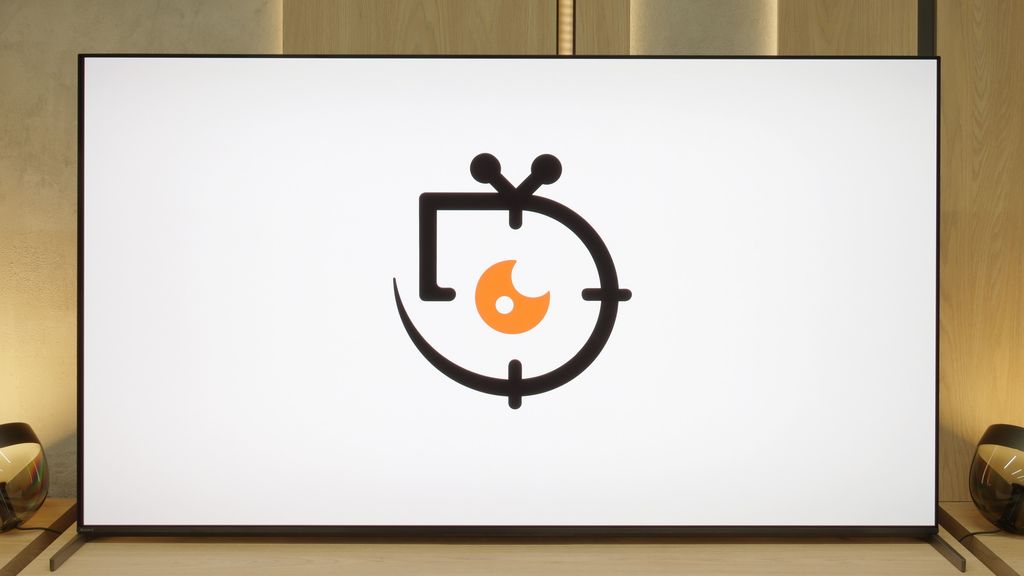
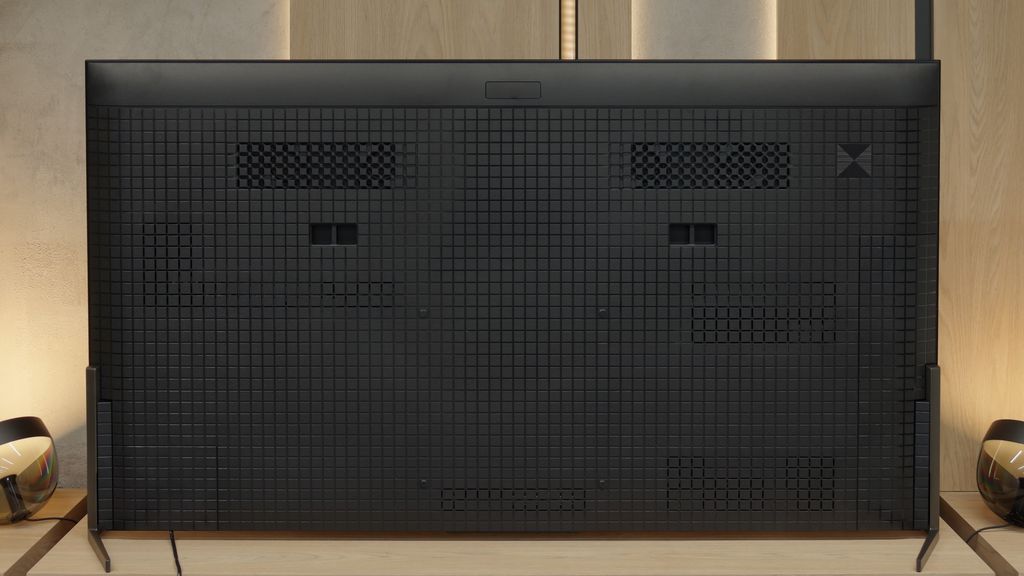

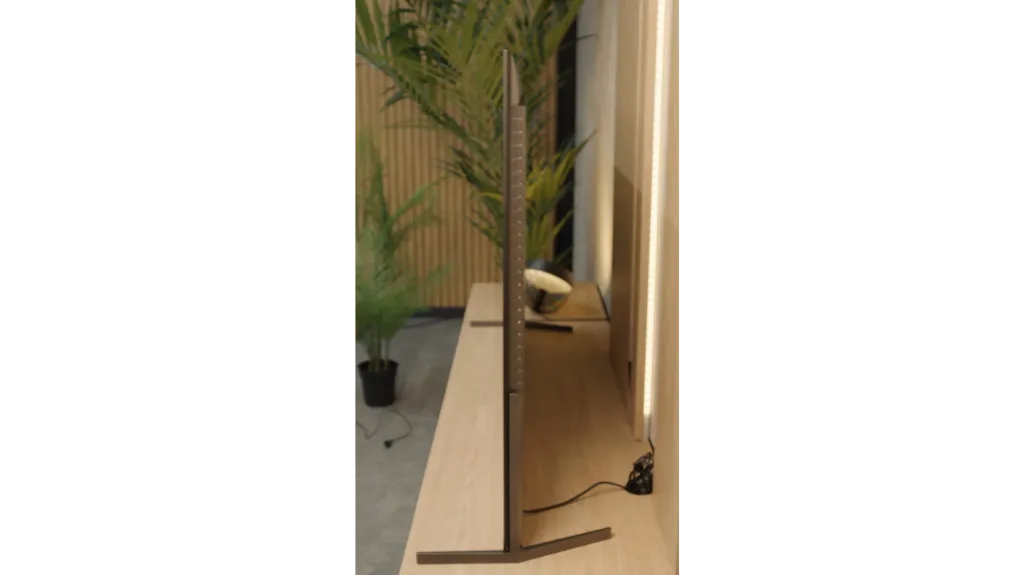
Contrast and black detail
10/10
10/10
Contrast:

Result
∞:1

Result
∞:1

Result
∞:1

Result
∞:1

Result
∞:1

Result
∞:1

Result
∞:1

Result
∞:1

Result
∞:1

Result
∞:1
Halo effect and black detail visibility:

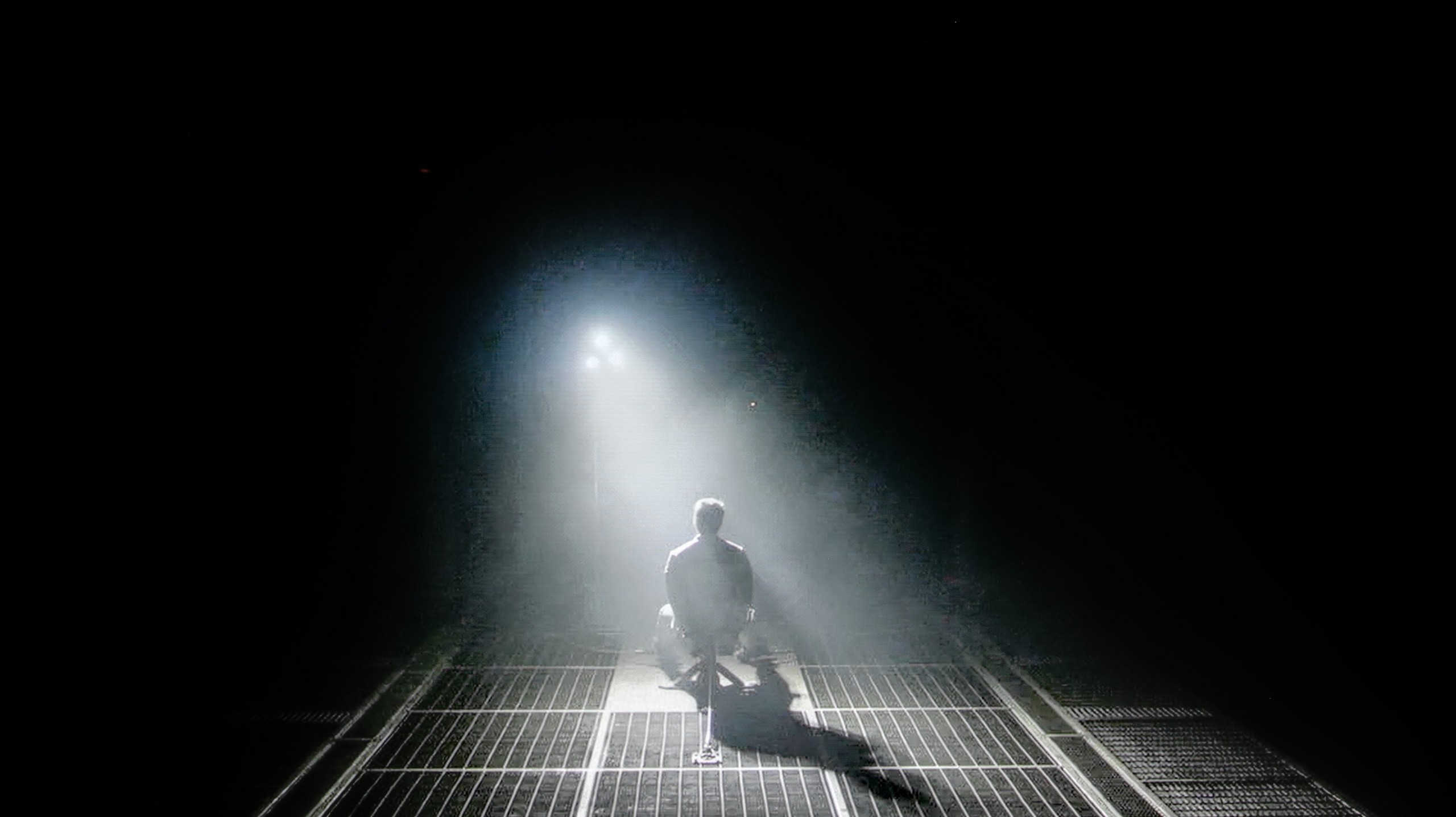
Sony A95L is an OLED television that truly impresses when it comes to contrast. With OLED technology, this model offers perfectly deep blacks – in dark scenes, there are no signs of colour bleeding or glow, making images look incredibly realistic. Additionally, QD-OLED technology allows for higher brightness, further emphasizing the difference between bright and dark elements. As a result, in scenes like those from the movies Oblivion and Sicario 2, A95L Sony excels at separating lights from shadows, giving the picture clarity and depth – the perfect solution for those seeking a cinematic experience at home.
In terms of black levels and contrast, the Sony Bravia 8 II is absolutely top-notch – and I mean that in every sense of the word. We have a QD-OLED panel here, which naturally offers near-infinite contrast. This means that each pixel can completely turn off, allowing black areas of the image to be truly black, rather than dark grey or navy blue. The effect is particularly impressive in cinematic conditions when the lights in the room are dimmed – then the picture takes on true depth and a cinematic quality. The Bravia 8 II also impresses with its separation of lights in challenging scenes. Test materials from films like Oblivion demonstrate how precisely the TV can distinguish small light sources from the surrounding darkness – without the halo or blurring effects that can still occur in the best LCD TVs (even the Bravia 9). Let's add that bright elements maintain full intensity even against absolute black. This not only creates a huge visual impact but also translates to better detail reproduction in high-contrast scenes, which is particularly important in HDR content.
HDR effect quality
7.8/10
8.4/10
Luminance measurements in HDR:

Result
1471 nit

Result
1498 nit

Result
1465 nit

Result
1527 nit

Result
626 nit

Result
1922 nit

Result
2034 nit

Result
1999 nit

Result
2026 nit

Result
770 nit
Scene from the movie “Pan” (about 2800 nits)


Scene from the movie “Billy Lynn” (about 1100 nits)

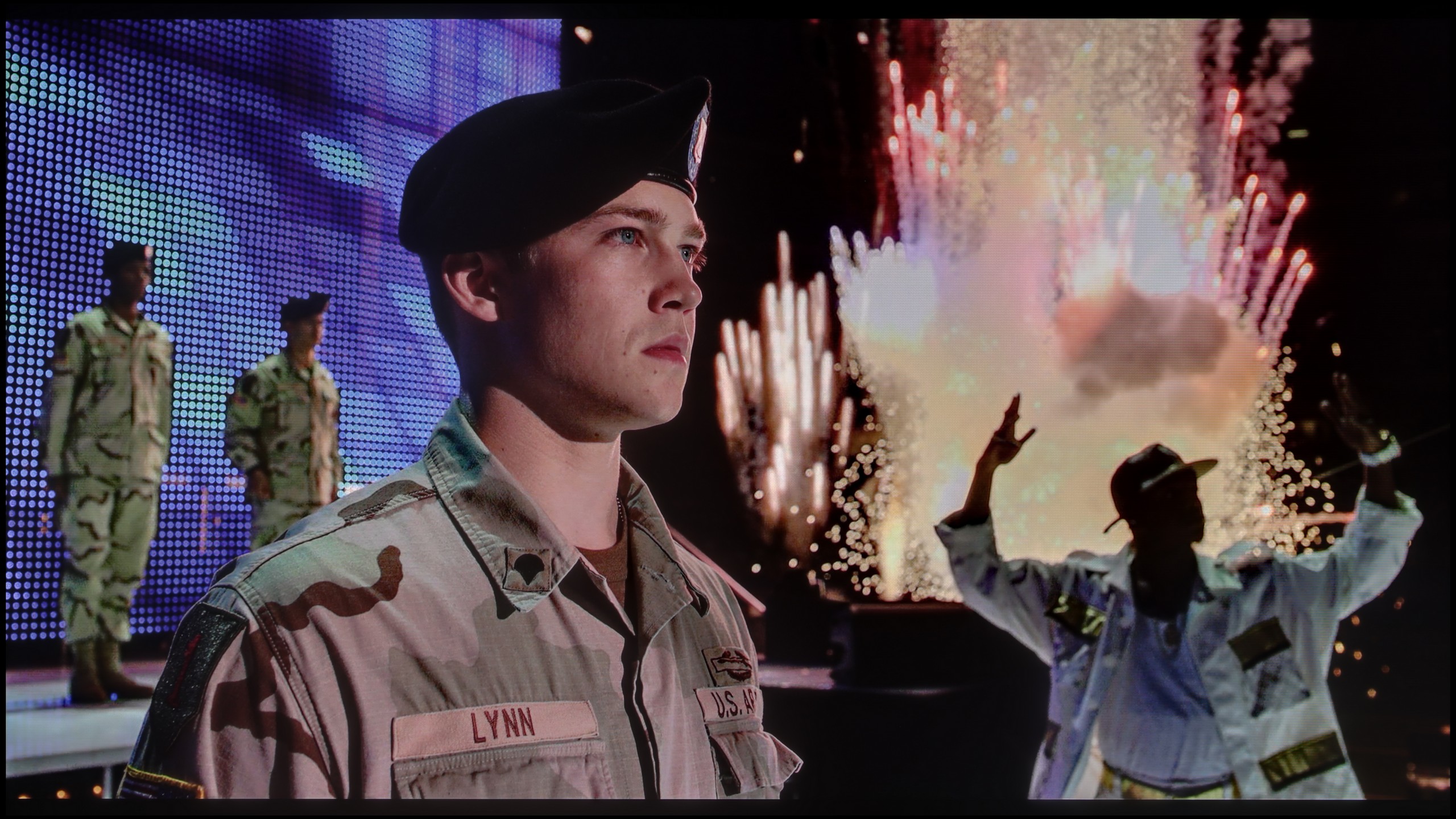
Static HDR10


Dynamic: Dolby Vision
Dynamic: Dolby Vision


HDR luminance chart:
Sony Bravia 8 MK2
HDR luminance
Sony A95L
HDR luminance
Sony A95L offers an incredible HDR effect, achieving an impressive brightness level of 1500 nits in scenes such as those from Life of Pi and Sicario 2. These results are truly remarkable – the bright elements in these films practically come alive on the screen, providing the viewer with immersive visual experiences. The only thing to note is minor issues with maintaining brightness in the scene from The Meg, where the entire scene is flooded with light. However, this is a natural effect associated with OLED technology. A big plus also goes to the wide coverage of the BT.2020 colour palette at 89%, which places A95L Sony among the top TVs in terms of colour reproduction. All of this is made possible by the QD-OLED panel from Samsung Displays.
Thanks to the new QD-OLED panel, the Sony Bravia 8 II can achieve astronomically high brightness levels of around 2000 nits, translating to near-reference quality in films and series recorded in HDR format. In test materials such as Life of Pi and Sicario 2, the effect is absolutely stunning – details in bright parts of the image remain perfectly visible, and night scenes captivate with depth and contrast. However, it’s not perfect. Compared to its most formidable competitors, the Bravia 8 II shows a noticeable drop in brightness during full-screen, very bright scenes. When comparing peak luminance with 100% white brightness in HDR mode, the Bravia 8 II can appear two or three times dimmer than LG G5 or Samsung S95F models. This was particularly evident in a scene from the film The Meg – the screen became noticeably darker than in competitors' televisions. Despite this flaw, the Bravia 8 II's results still place it at the forefront of the market. It deserves praise for its absolutely top-notch colour gamut coverage – nearly 100% DCI-P3 and close to 90% BT.2020. These parameters allow full potential extraction from HDR content and provide a cinematic experience in the comfort of your home.
Factory color reproduction
7.9/10
8/10


Factory Mode
After calibration


Factory Mode
After calibration
The best factory mode for colour reproduction on the Sony A95L is IMAX Enhanced. This mode seems well-calibrated at first glance, but upon closer analysis, several areas for improvement become apparent. Firstly, the white balance for both SDR and 4K HDR content is marred by an excess of blue and red hues, leading to a subtle pink tint, particularly noticeable on neutral tones. As a result, skin tones are skewed, affecting the realism of the displayed image. This is clearly visible in the comparison photo below. Additionally, the Colour Checker test confirms the presence of these errors – the colour samples often deviate from their reference values, indicating some inaccuracies in the factory colour reproduction of the A95L Sony. The maximum deltaE error values reach up to 5.8, which is a clear indicator that colours are not always reproduced as accurately as they should be.
Regarding brightness characteristics, the gamma for HD/SDR content is generally quite good, maintaining an appropriate balance between brightness and contrast. Unfortunately, a significant jump is visible at the end of the graph, leading to a strong brightening of the image when the screen is fully flooded with white. This can make scenes with very bright backgrounds, such as snowy landscapes or intense daylight, appear too glaring and lose detail. For HDR content, the EOTF curve, which controls luminance, is slightly elevated compared to reference values. This, in turn, causes the image to be somewhat brighter than it should be, which can affect the perception of more subtle details in the darker areas of the frame.
Right out of the box, the Bravia 8 II performs really well. In the best IMAX® Enhanced mode, the TV manages to render colours in a pleasant and natural way, although "well" doesn’t mean "best in class" here. The white balance definitely requires adjustment – skin tones tend to lean towards slightly pink/cool tones, both in SDR and HDR content. We also noticed that the EOTF curve characteristics show a tendency to brighten the darkest parts of the image. This is likely due to the manufacturer's desire to highlight as many details as possible, even in deep shadows. Is this a good approach? It's hard to say definitively, but we know one thing – it's not an ideal solution.
Color reproduction after calibration
9.3/10
9.2/10

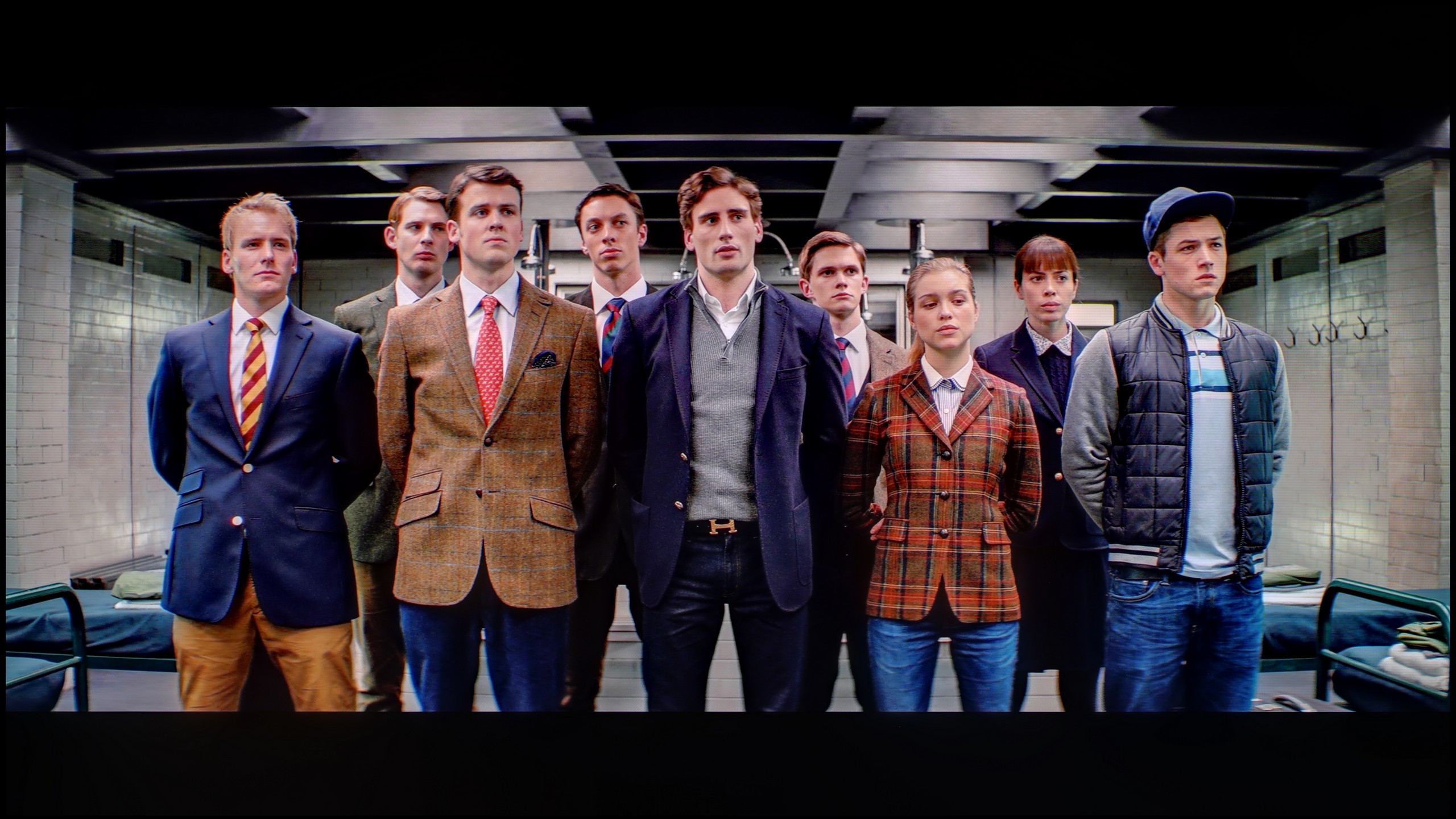

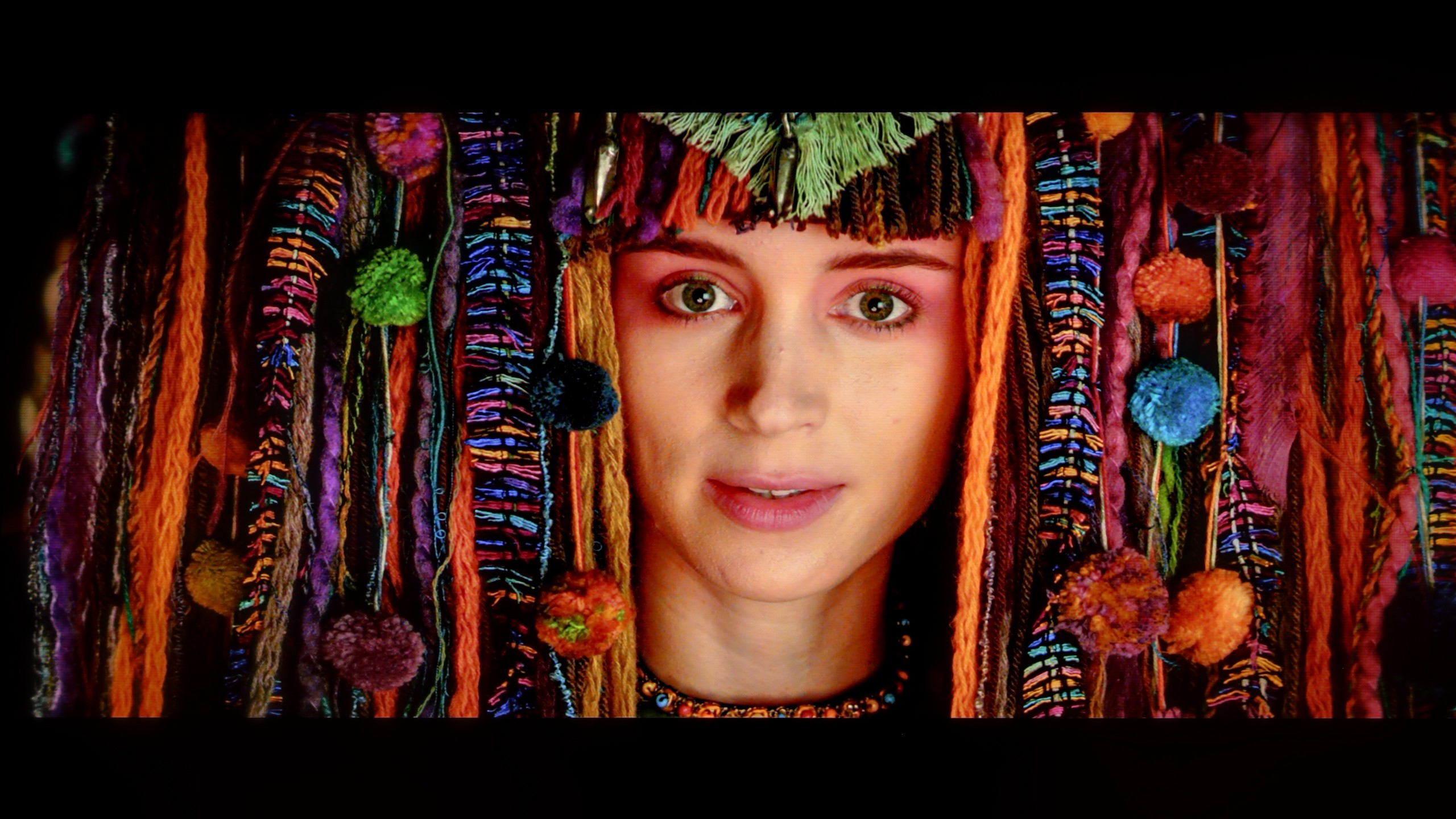
Sony A95L offers excellent tools for professional screen calibration, allowing you to maximise the potential of the IMAX Enhanced mode. We used them to achieve an image quality that satisfies even the most demanding viewers. After calibration, the white balance for both 4K HDR and SDR content looks simply fantastic – nearly perfect. The Colour Checker test confirmed that deltaE errors do not exceed a value of "2", which means that colour reproduction is extremely accurate, and any deviations are practically imperceptible to the human eye.
The calibration also brought a significant improvement in brightness – gamma is now perfectly balanced, eliminating the previous problem of excessive brightening in scenes with very bright backgrounds. Thanks to this, even the brightest moments, such as snowy landscapes or intense daytime scenes, appear natural, without the risk of blown-out highlights. The EOTF curve, responsible for controlling luminance in HDR content, has also been improved – it now reaches reference levels in both synthetic tests and practical movie watching.
As a result of the calibration, A95L Sony provides an excellent experience, whether you are watching regular TV content or your favourite films. Every detail is reproduced exactly as the creators intended – without unnecessary brightenings, with perfectly rendered colours and appropriate depth. This shows that this television, after professional tuning, can compete with the best screens on the market, offering an image that truly impresses.
After calibration, the excessive cooling of the image caused by an overly strong boost in blue colour was primarily eliminated. The reds became deeper, and the skin tones took on a natural, healthy appearance. The actors, who previously seemed "cold," now look much livelier and more convincing on screen. However, one thing hasn't changed – the analysis of the EOTF curve still shows that the Bravia 8 II has a tendency to brighten the darkest parts of the image. It's hard to say whether this is a deliberate effect by the manufacturer or a consequence of the panel's design and software. In practice, this means that scenes that the creators wanted to leave in deep darkness can reveal more details than intended. Despite this, the reception of the image after calibration is clearly better – the warm, natural tones and realistic skin shades make viewing on the Bravia 8 II simply more pleasant to the eye.
Smoothness of tonal transitions
9/10
8.5/10





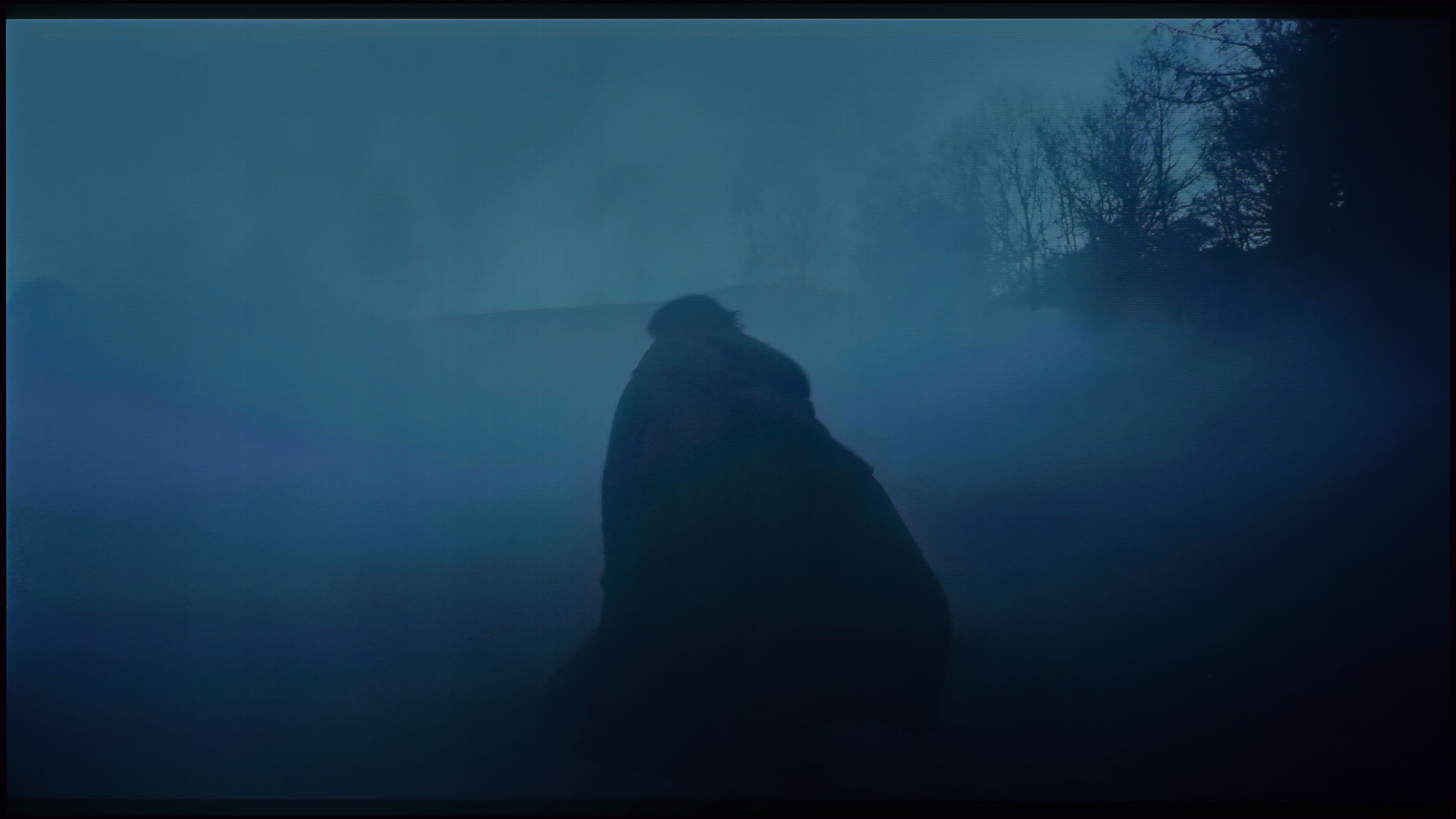






The fluidity of tonal transitions in A95L is truly remarkable – it’s one of the greatest advantages of QD-OLED panels. The image appears incredibly smooth, and all transitions between different shades are perfectly rendered, with no noticeable jumps or distortions. As of today, it's challenging to find a panel that handles tonal transition reproduction with such precision. Of course, if someone really looks closely, they might notice slight errors in the black areas, but they are subtle enough that hardly anyone will notice them during normal use of the Sony A95L. For most users, these minor imperfections will be completely unnoticeable, and the fluidity and detail of tonal transitions will satisfy even the most demanding enthusiasts of excellent picture quality.
The fluidity of tonal transitions in the Sony Bravia 8 II can be described as very good, though with a clear distinction between light and dark materials. In scenes with high luminance, the television performs exemplary – the gradation is smooth, free from visible bands or artifacts, and subtle colour transitions maintain full consistency. This is particularly evident in HDR materials, where bright skies or illuminated frames look nearly perfect – here the rating could easily be 9.5/10.
The situation is somewhat different in darker sequences. In night scenes or heavily shadowed ones, particularly in test materials, slight issues with the fluidity of gradation can be observed – transitions become less subtle. While this level does not spoil the perception of the film, a more sensitive eye will catch the difference, especially when compared to absolutely top-of-the-line models on the market. In this category, the rating is rather around 7.5/10.
Image scaling and smoothness of tonal transitions
8/10
8.5/10
Smooth transition function

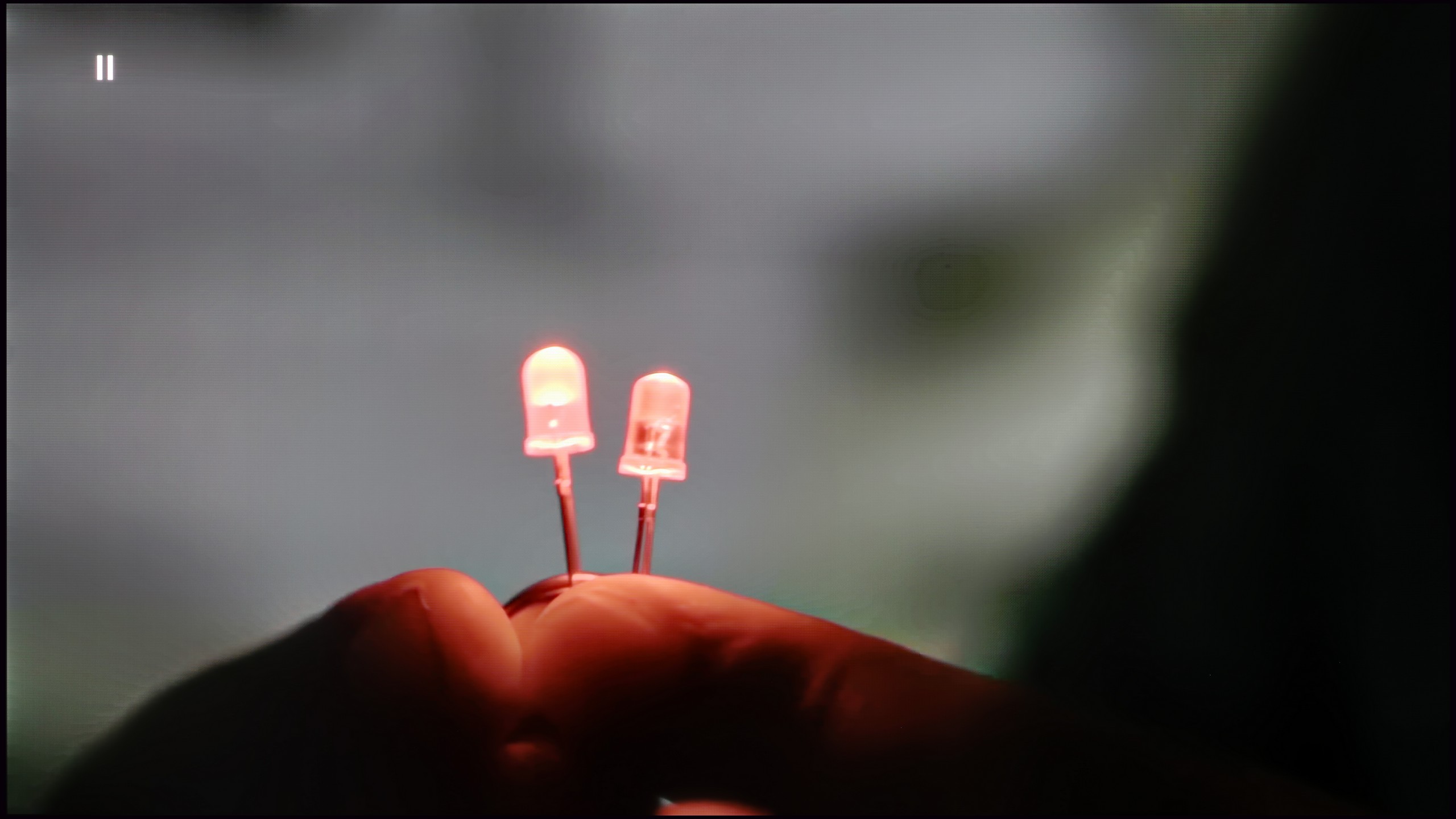
Image without overscan on the SD signal


The tonal transition smoothing function in Sony A95L works really well and is worth noting. We recommend setting it to "Medium" level, as this value achieves an ideal compromise – no artifacts appear, and the image looks incredibly natural and pleasing to the eye. This ensures that transitions between different shades are smooth while maintaining scene detail, which further enhances viewing comfort.
When it comes to upscaling, you can see the full power of the XR processor here. Sony A95L handled our test material featuring a model exceptionally well – the image is remarkably clear, there are no excessive jagged edges, and the background details are perfectly preserved. The XR processor effectively improves low resolution, providing very good results that allow you to enjoy content in nearly high quality, even if its source is not perfect.
Upscaling and digital image processing are a true showcase of the capabilities of the Bravia 8 II. Sony has long been regarded as a master in this field, and here it only confirms its reputation. The proprietary XR processor can extract nearly the maximum from lower resolution materials – whether it's TV or an old movie from a DVD, the image appears clearer, with more detail and better depth. Sure, if we feed it exceptionally poor-quality material (like our archival photo with the Model), it won't work miracles, but in everyday viewing, it’s hard to find fault.
The gentle gradation feature also performs excellently. In the “Medium” setting, it effectively smooths tonal transitions, eliminating stripes on colourful and grey gradients, while not destroying film grain or fine image details. It’s this balance between delicacy and effectiveness that keeps Sony TVs among the best on the market in this category.
Blur and motion smoothness
8.5/10
8.5/10

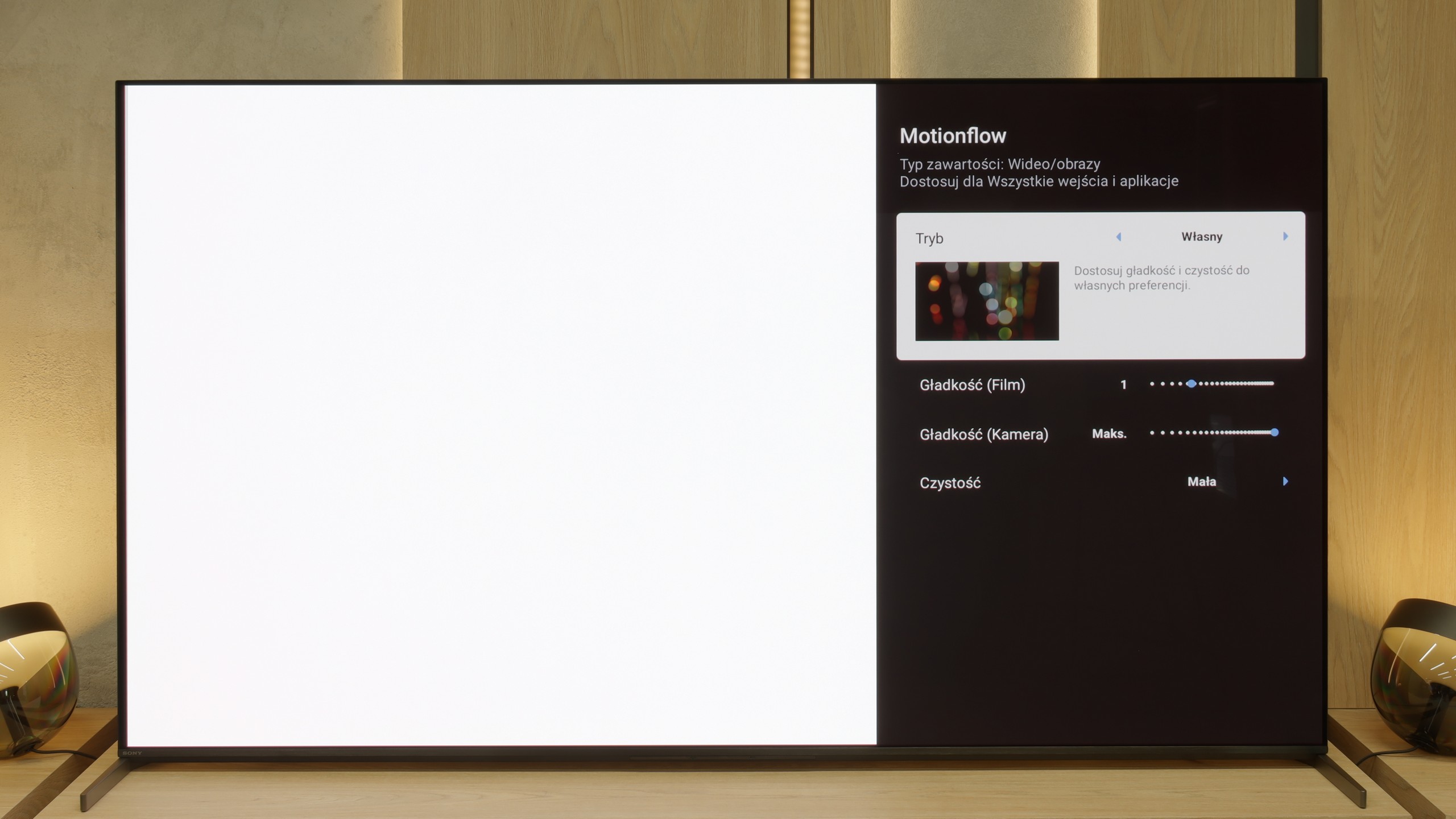
Blur (native resolution, maximum refresh rate):





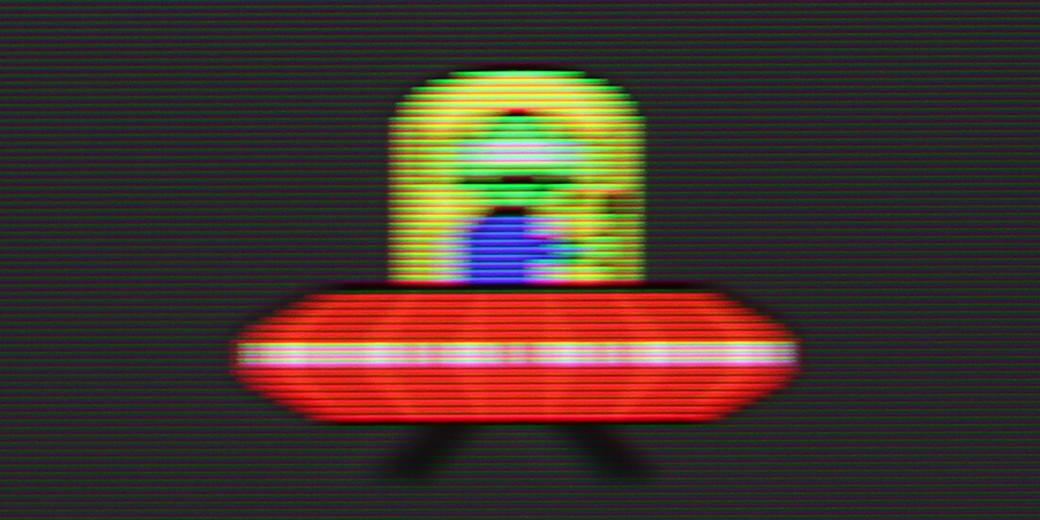
Blur (BFI function enabled):






Blur ():
Blur (MotionFlow 120Hz):

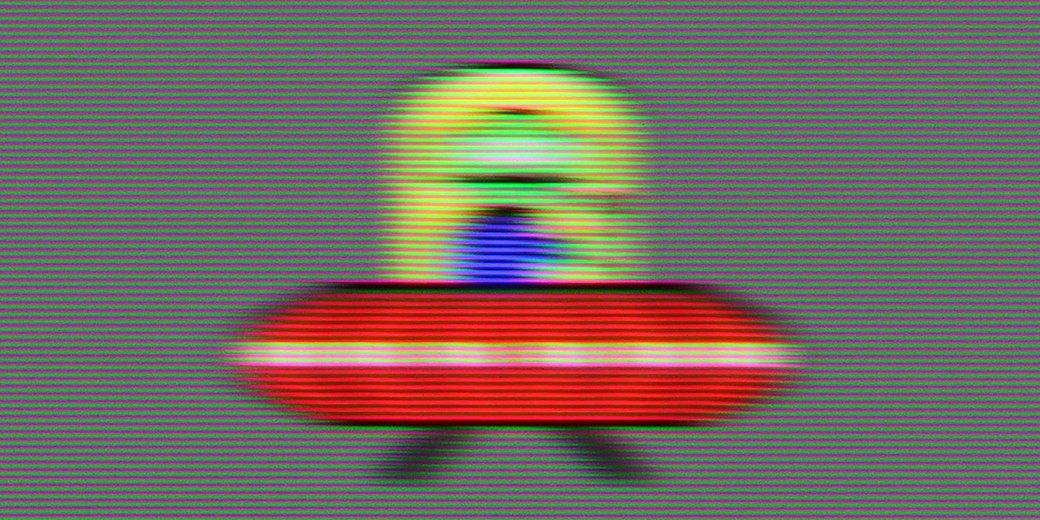
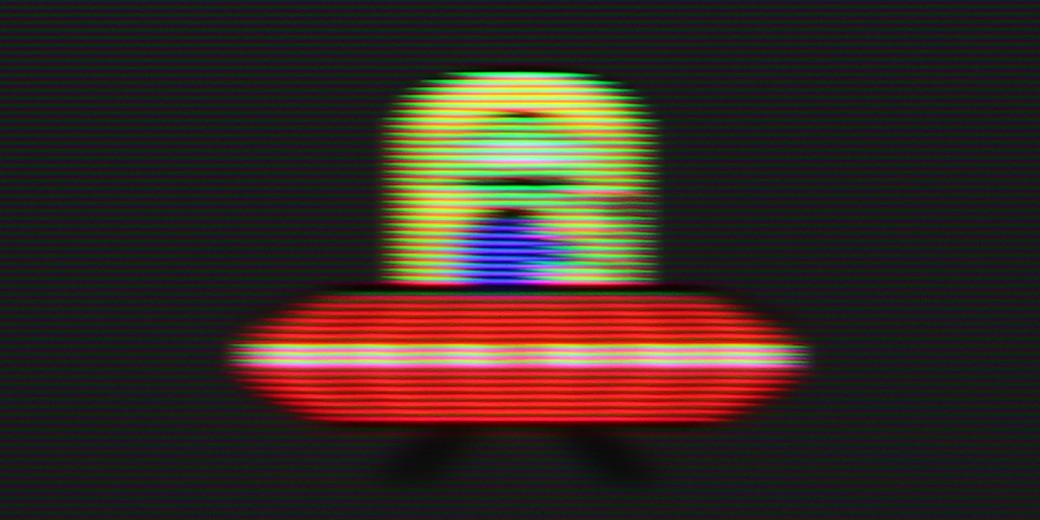
Sony A95L is a television that should satisfy both gamers and movie enthusiasts. When it comes to watching films, this model is equipped with Motionflow technology, which allows you to precisely adjust whether you want the image to be more "framey," like in traditional cinema, or exceptionally smooth, like in cinema TVs. The "Smoothness" slider allows you to control the level of fluidity – from subtle changes to more noticeable effects, while the "Clarity" slider reduces flicker and artifacts, helping to achieve more natural and clear movement. When it comes to gaming and watching sports, the A95L Sony offers a refresh rate of 120 Hz, making every dynamic action look incredibly smooth. Gamers will appreciate the lack of blur, and sports fans will see every movement in full clarity. Overall, the television performs excellently – both with fast-paced gameplay and emotionally charged film sequences.
Motion fluidity is practically a closed topic in the case of the Bravia 8 II. The OLED with 120 Hz refresh rate naturally provides a very clean, clear image in dynamic scenes, so it's hard to complain about anything here. However, one of the best smoothing systems on the market deserves particular praise. They allow for precise adjustment of movie fluidity to personal preferences – from gentle smoothing to an almost "theatrical" effect – without the risk of artificial jumps, image tearing, or annoying artifacts. It's one of those features that will be appreciated both during movie screenings and while watching sports.
Console compatibility and gaming features
9.4/10
9.4/10
- ALLM
- VRR
- VRR range48 - 120Hz48 - 120Hz
- Dolby Vision Game Mode
- Correct implementation of HGIG
- 1080p@120Hz
- 1440p@120Hz
- 4K@120Hz
- Game bar

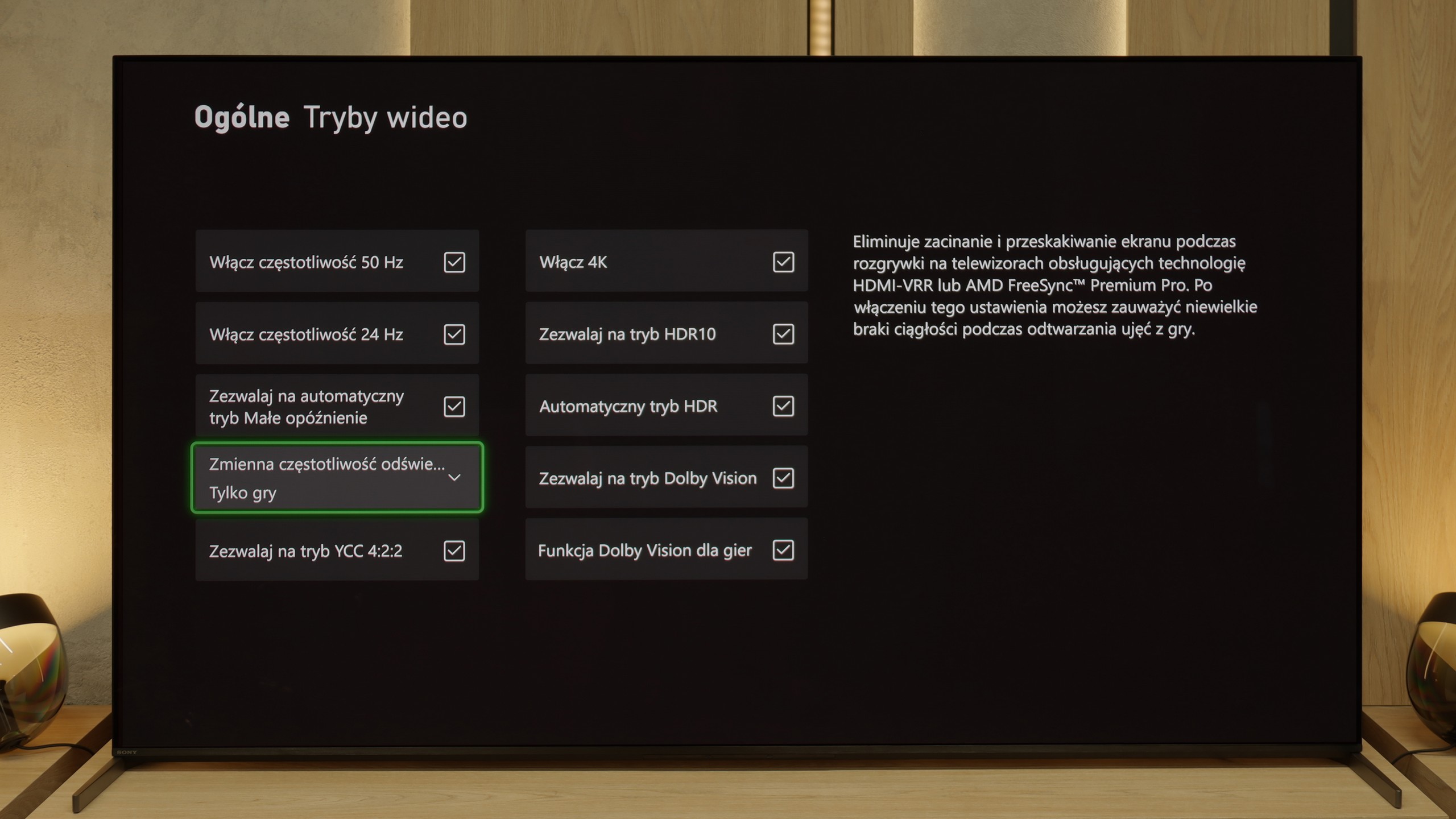



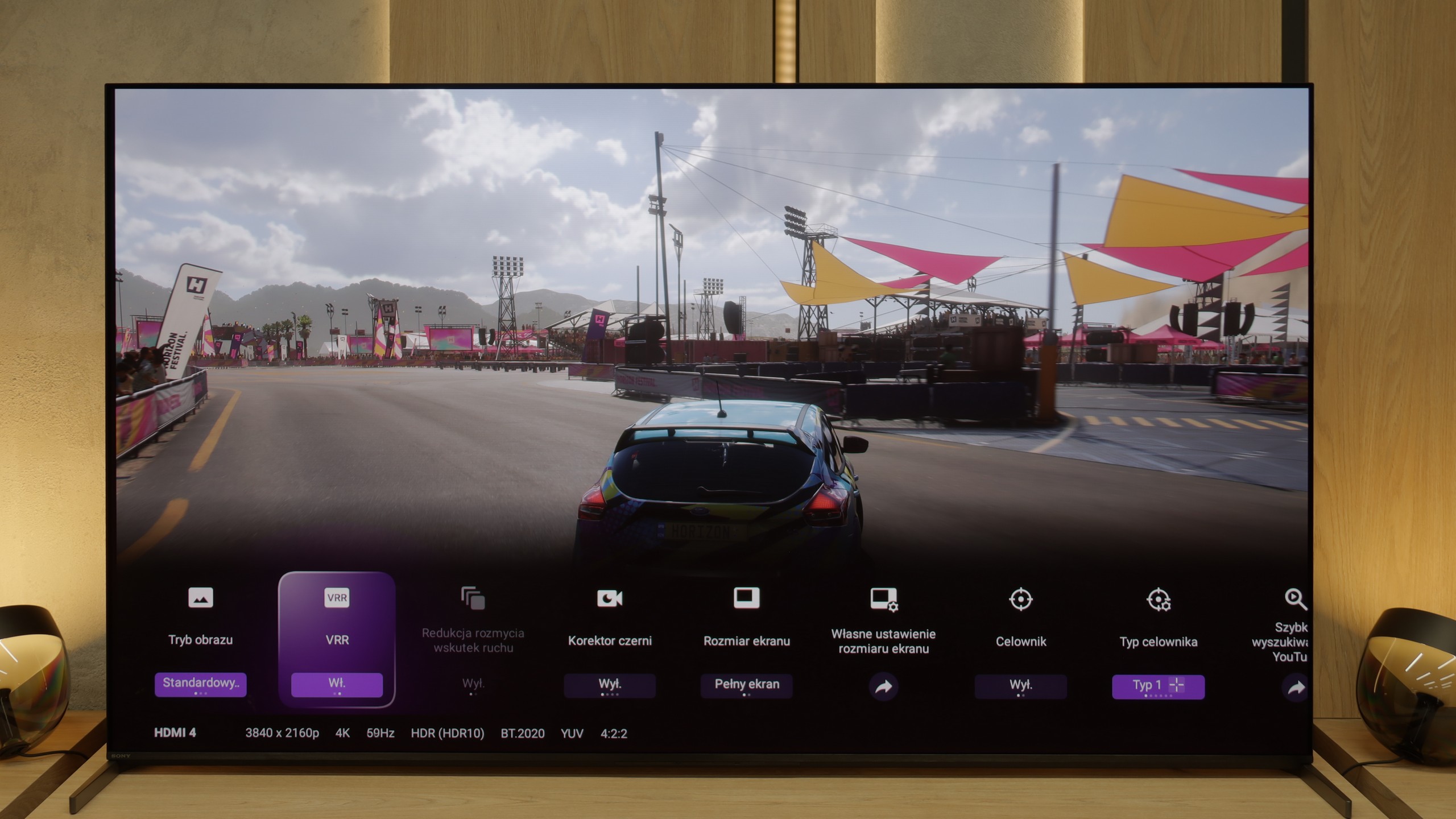

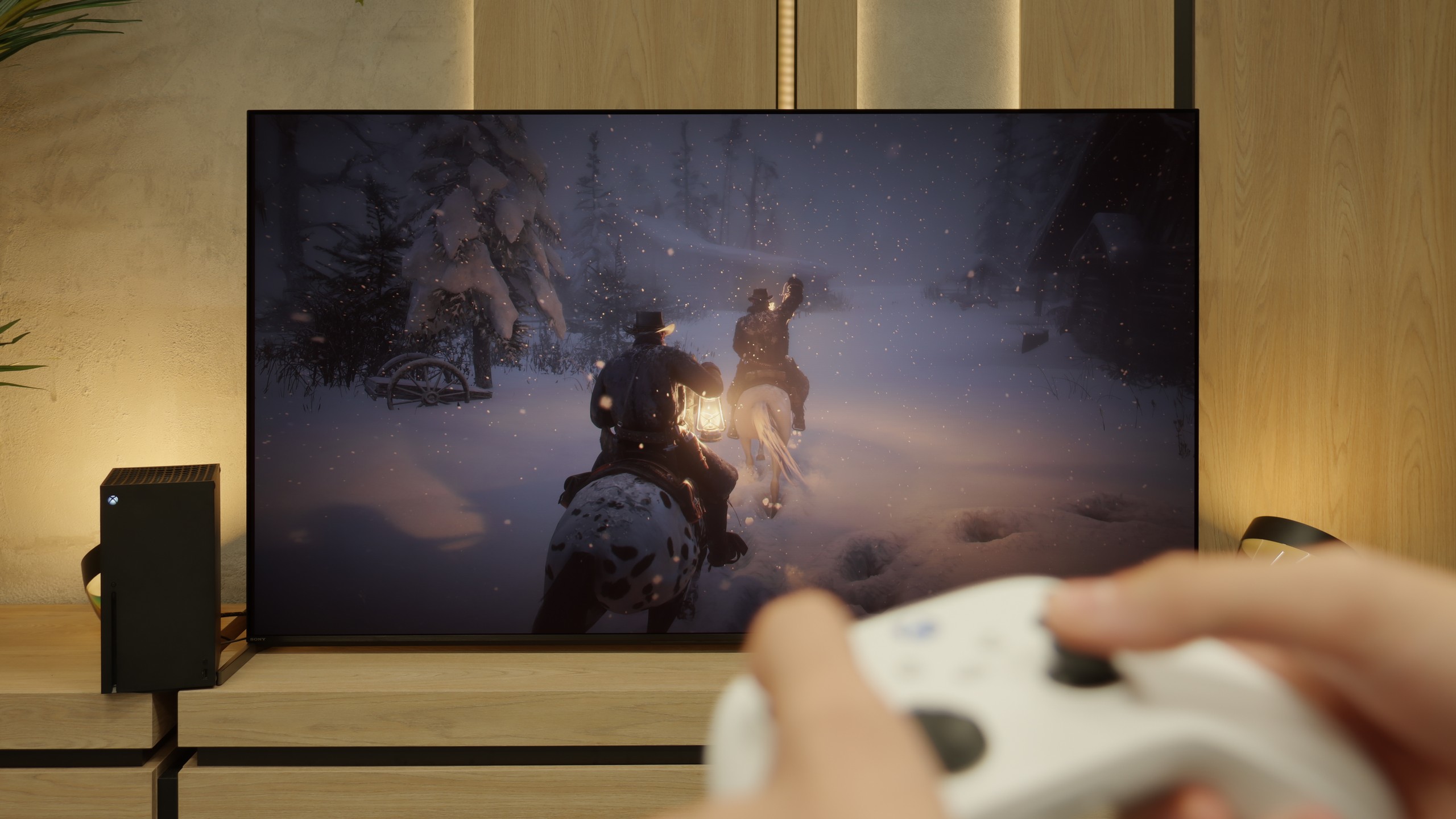
Sony A95L is a television that will truly satisfy gamers, thanks to several key features that set it apart from the competition. To begin with, the 120 Hz refresh rate – this is something that anyone who loves fast-paced action games, racing, or dynamic shooters will appreciate. This makes the image exceptionally smooth, and gameplay more satisfying, without annoying stutters. The A95L Sony also has an ALLM (Auto Low Latency Mode) feature, which automatically activates low-latency mode when we start up a console. What does this mean? Primarily, faster reactions on screen, which in games where every second counts, is simply invaluable. Added to that is VRR (Variable Refresh Rate), which ensures that the image refresh rate adapts to the number of frames generated by the console. The effect? No tearing of the image, and everything looks smooth and cohesive – even with varying FPS.
It's worth mentioning the support for Dolby Vision with low input lag in games – something we don't often see in televisions, but here it is included. As a result, the image in HDR-compatible games is incredibly vibrant, with vivid colors and excellent contrast. Both the brightest and darkest details are visible, making everything look just as the game developers intended. And there's also the "Game Bar" – a small but very practical convenience. It gives us all the essential gaming-related settings at our fingertips, such as VRR and lag information. There's no need to interrupt gameplay to adjust settings – everything is at hand.
However, it's important to note that the A95L offers only two full-bandwidth HDMI 2.1 ports, one of which is allocated for eARC. This could be somewhat limiting if we plan to connect multiple devices – for example, a next-gen console and a soundbar simultaneously. In such cases, eARC occupying one of those ports may be a bit problematic, blocking the option to connect a second console.
Sony has really done its homework from previous years and in the Bravia 8 II, it has prepared a package of features for gamers that is hard to describe as anything other than "almost perfect". We have everything you’d expect from equipment of this class – VRR, ALLM, Dolby Vision Gaming mode, HGiG, and even a handy Game Bar that allows you to quickly check parameters and change settings without leaving the game. It's also worth noting how smoothly and seamlessly these features work – no delays, no strange stutter. You simply turn on the game and everything looks as it should. Unfortunately, there are a few "buts". The manufacturer still provides us with only two full bandwidth HDMI ports, so if someone has a console, a PC, and another device like a Soundbar connected via eARC, the fun begins with plugging and unplugging cables. It's also surprising that there's no support for 1440p at 120 Hz – particularly important for Xbox gamers. Overall though – this is one of those TVs that can comfortably be placed in the centre of a gaming lounge and enjoyed without major compromises.
Input lag
9.8/10
9.8/10
SDR
HDR
Dolby Vision
When it comes to input lag, Sony A95L really delivers. Even in Dolby Vision mode, the latency is surprisingly low – results below 10 ms with 120 Hz content are quite impressive. Thanks to such low input lag, gaming is incredibly responsive, and every action in the game is instantly reflected on the screen. For those playing at 60 frames per second, an input lag of 17 ms is also very good. This is a value that practically has no impact on the gaming experience – it falls within the so-called "placebo effect." Sony deserves praise for updating the Dolby Vision Game mode, which solved the issue of high input lag that was present at the TV's launch in 2023.
Input lag on the Bravia 8 II is a strong point that every gamer will appreciate. With 120 Hz content, the values hover around 10 ms, placing this TV among the best – the response is almost instantaneous, and controls in fast-paced games remain fully predictable. At 60 Hz, the latency naturally doubles, but it still stays at a level that can be deemed exemplary. Importantly, Sony has done exceptionally well with Dolby Vision support in games – it operates here exceptionally smoothly and quickly. This is a significant change compared to previous years when Dolby Vision Gaming on TVs of this brand could cause additional latency or minor fluidity issues. Now it’s clear that the manufacturer has perfected this aspect to perfection.
Compatibility with PC
5/10
7.6/10

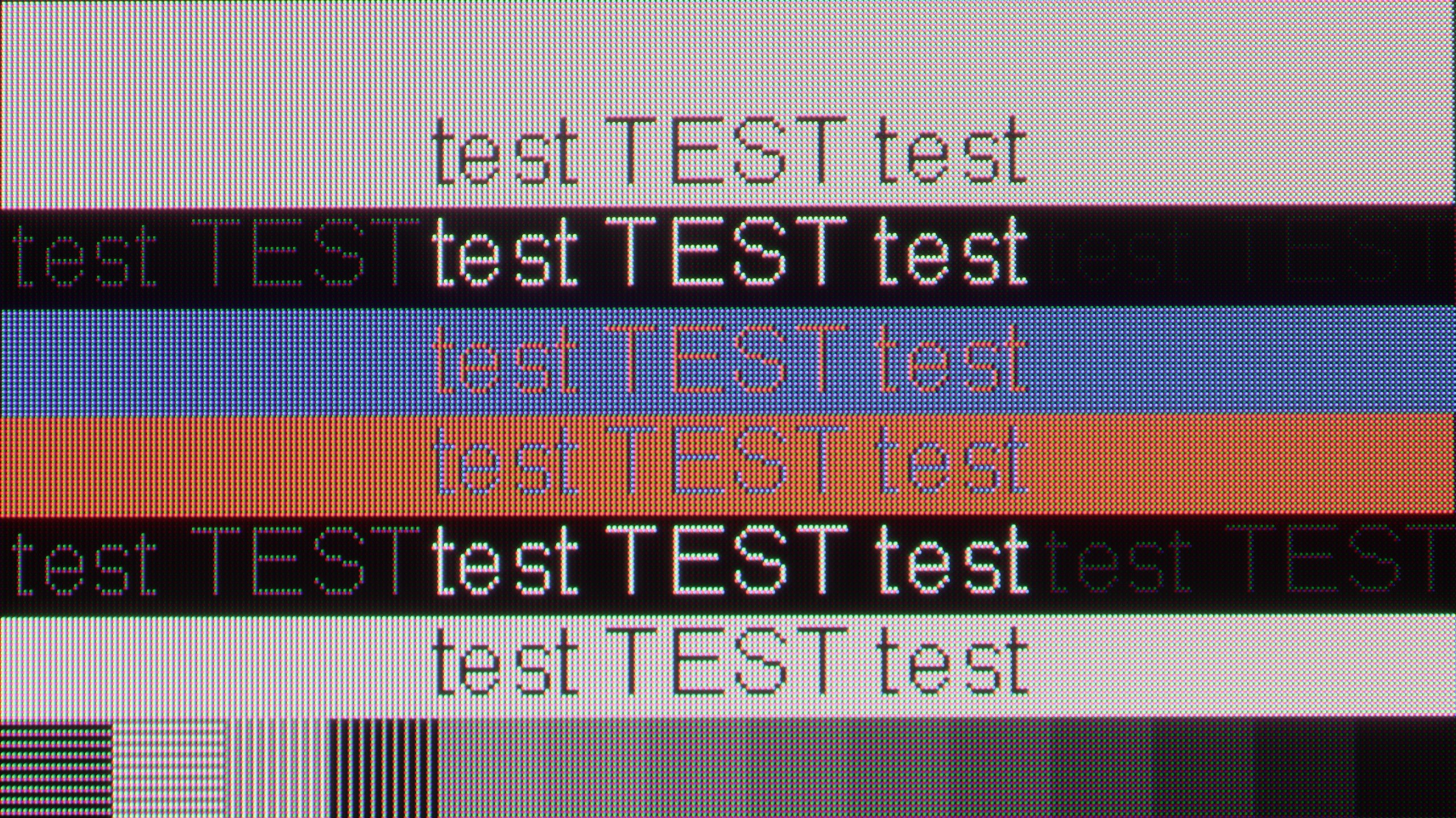
Sony A95L TV offers compatibility with computers at 4K resolution at both 60 Hz and 120 Hz. In 4K mode at 60 Hz, the readability of fonts is at a good level, making it comfortable to use the TV as a monitor for office work or browsing content.
Unfortunately, when switching to 4K with a refresh rate of 120 Hz, the quality of the displayed text deteriorates – the resolution is reduced by 2 times, negatively affecting the clarity of the fonts. In 4K, fonts lose sharpness, which can make prolonged use of the TV as a computer monitor at higher refresh rates difficult. Of course, the problem disappears if we switch back to 60Hz, but this can be quite inconvenient when the TV forces us to "juggle" the settings.
Compared to last year's A95L, the Bravia 8 II has made a significant leap forward in terms of compatibility with PCs. Support for chroma 4:4:4 works flawlessly, so text – both regular and very small – remains sharp and clear. This means that working with documents, spreadsheets, or even editing photos doesn't strain the eyes and doesn't require fiddling with settings.
However, there's a bit of a letdown. For a TV of this calibre, one would expect an additional gaming mode with a refresh rate above 120 Hz. After all, in the price segment this model is in (and even in lower ones), 165 Hz and even 240 Hz are becoming more common. Here, that option is missing, which may be a slight disappointment for some PC enthusiasts. Fortunately, thanks to the low input lag and G-Sync support, the Bravia 8 II still manages to immerse you in PC gaming without feeling lag or image tearing. It's equipment that works well not only in the living room but also on the gamer’s desk.
Viewing angles
9.7/10
9.8/10
The viewing angles on the Sony A95L are among the best on the market, thanks to the QD-OLED panel. With this technology, colours remain vibrant and contrast hardly changes, regardless of the viewing angle. This is a result that even standard OLED panels fail to achieve, making the A95L perfect for rooms where viewers change position or there is a larger group of spectators.
In this regard, the Bravia 8 II is at the absolute forefront of the market. Thanks to the use of a QD-OLED panel, the television maintains full colour depth and high contrast even when viewed from a large angle. This is a distinct advantage over constructions based on WOLED panels, which can slightly lose saturation and detail when the viewer is positioned more extremely. Like its competitor, the Samsung S95F, the Bravia 8 II performs almost flawlessly in this category – no matter whether we're watching a film from the couch, a chair next to it, or standing in the corner of the room, the image remains true to the original.
Daytime performance
5.4/10
5.6/10



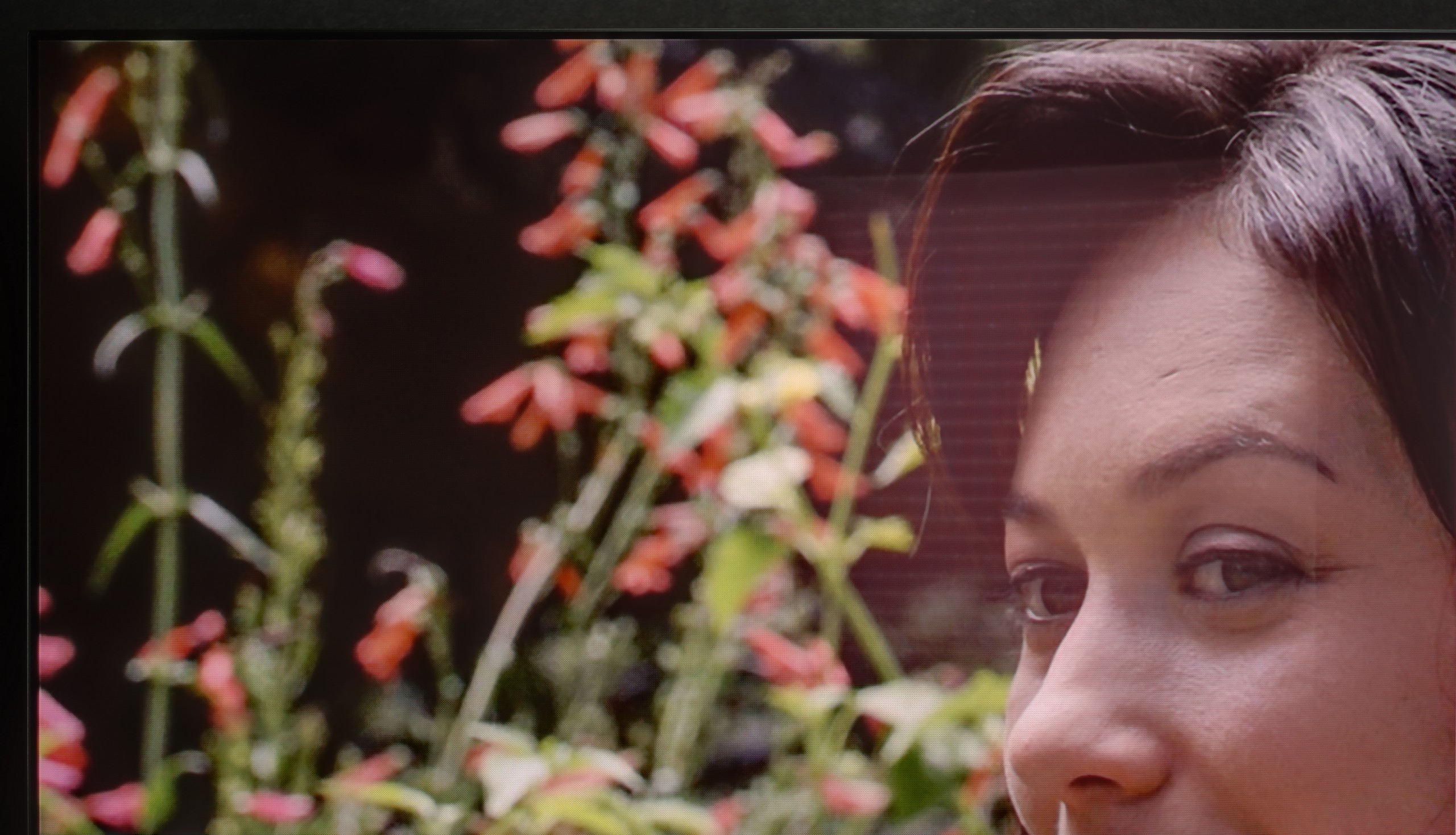
Panel brightness
Average luminance SDR
Sony Bravia 8 MK2: 419 cd/m2
Sony A95L: 387 cd/m2
Sony A95L performs quite well in daytime conditions. The QD-OLED panel effectively suppresses reflections and glare, making viewing comfortable even in bright sunlight. An average brightness of 380 cd/m² is a really good result, especially for an OLED TV – it holds up, although it still can't compete with Mini LEDs, which are unmatched in this regard. One of the issues that may bother some viewers is the characteristic QD-OLED effect, where blacks lose their depth and take on a slightly cherry hue in strong light.
For a TV of this class, we expected a better performance. An average SDR brightness of around 400 nits is definitely not enough to talk about great visibility in a sunlit lounge. In very demanding lighting conditions, we will be forced to reach for curtains or… move the TV to another place. As with every QD-OLED panel, the black in daylight is not perfectly black – it takes on a slightly cherry hue. Fortunately, this technology also has its advantages over WOLED panels – it significantly more effectively suppresses reflections, making direct light reflections less intrusive. Despite this advantage, in overall terms, the performance of the Bravia 8 II in a bright room should be rated as average, especially considering the high-end equipment to which this model belongs.
Panel details
Subpixel Structure:

Panel uniformity and thermal imaging:

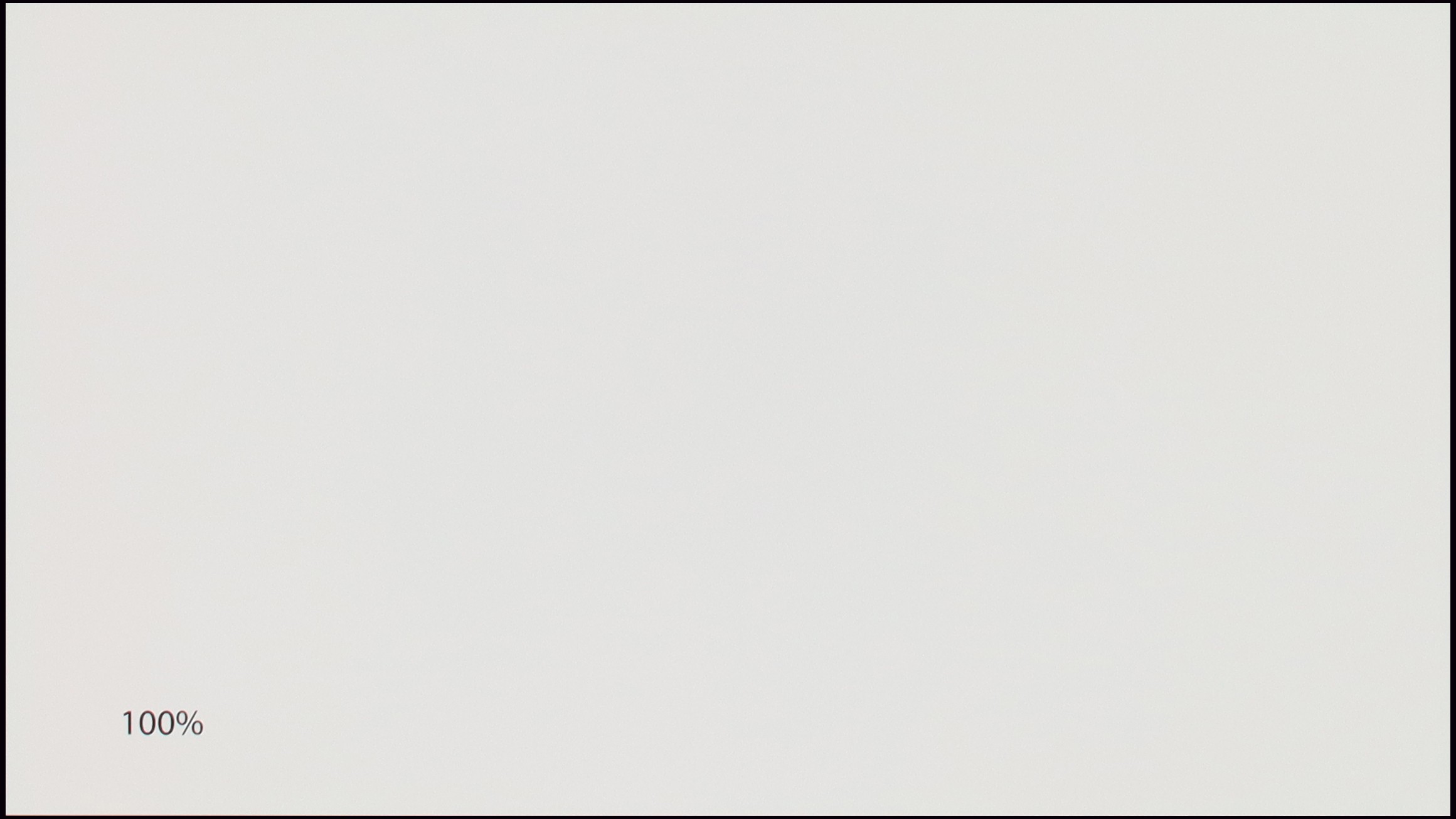
Sony A95L
Sony Bravia 8 MK2
TV features
8.8/10
8.9/10
- HDMI inputs2 x HDMI 2.0, 2 x HDMI 2.1 48Gbps2 x HDMI 2.0, 2 x HDMI 2.1 48Gbps
- OutputsToslink (Optical audio), eARC (HDMI), ARC (HDMI)Toslink (Optical audio), eARC (HDMI), ARC (HDMI)
- Network InterfacesWi-Fi 2.4GHz, Wi-Fi 5GHz, Ethernet (LAN) 100MbpsWi-Fi 2.4GHz, Wi-Fi 5GHz, Ethernet (LAN) 100Mbps
- TV receptionDVB-T, DVB-T2, DVB-S, DVB-S2, DVB-CDVB-T, DVB-T2, DVB-S, DVB-S2, DVB-C
Classic features:
- Recording to USB (terrestrial TV)
- Recording programming
- Picture in Picture (PiP)
- RF remote control (no need to aim at the screen)
- Backlit remote control
- Teletext
- Audio only mode
- Bluetooth headphones support
- Simultaneous Bluetooth headphones & TV audio
Smart features:
- AirPlay
- Screen mirroring (Windows Miracast)
- Voice search
- Voice search in native language
- Ability to connect a keyboard and mouse





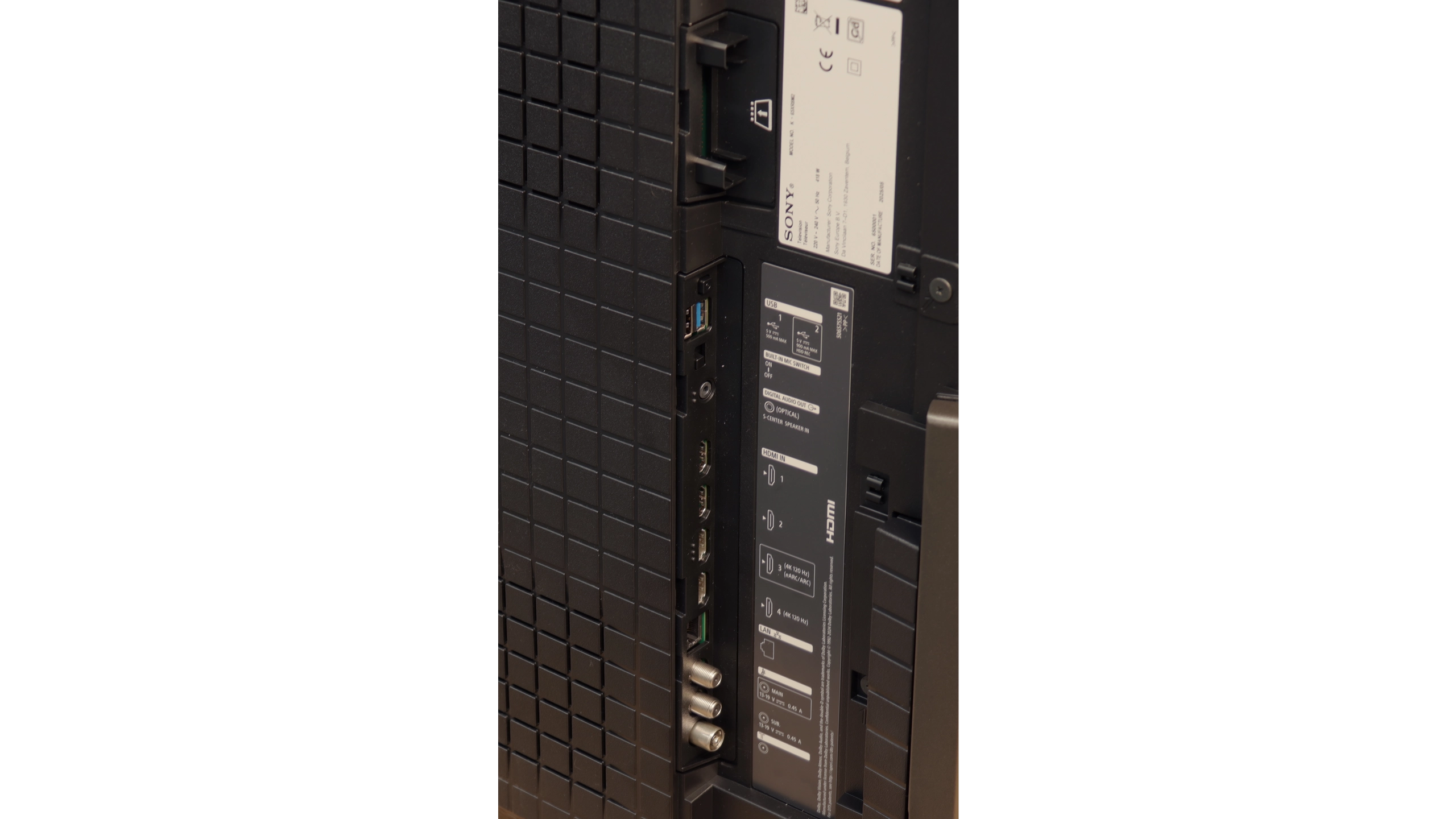
Sony A95L runs on the Google TV operating system, which provides easy access to a wide range of apps, streaming services, and various personalisation features. The interface is clear and user-friendly, and the wealth of available apps means that everyone will find something for themselves – from popular streaming services like Netflix, Disney+ or HBO Max, to various music and sports apps. Google TV also supports voice assistant functionality, allowing for easy content search, control of TV settings, and even management of other smart devices in the home – all through simple voice commands.
Sony A95L also offers a range of user-friendly features that make it even more versatile. The TV has the ability to record programs directly to USB memory, a convenient solution if you can't watch something live. It also supports AirPlay, making it easy to stream content from Apple devices, and additionally, you can connect various peripherals via Bluetooth, such as headphones or game controllers. The package includes two remotes – one traditional and one modern, backlit remote, which is particularly useful for evening viewing when the room is dark. It is worth mentioning the lack of PIP functionality, which allows watching multiple TV signals simultaneously.
In terms of appearance, A95L Sony may not be the thinnest OLED TV on the market, but it has its strengths. The package includes a practical stand that can be adjusted in various ways, allowing you to tailor the TV to your needs and space arrangement. Additionally, the manufacturer has included the Bravia Cam, which opens up further possibilities – from video calls to smart features such as optimising image and sound based on the viewer’s position. While it may not be the sleekest, its solid construction and useful accessories make the A95L look really good in any living room.
SONY Bravia 8 II – TV Features
Bravia 8 II really has a lot to offer to those who use their television in a traditional way. In the box, you get two remotes – one modern, minimalist "smart" one and the other, a traditional, numerical one, designed for those who treat their TV just as… a TV 😉. Sony also allows programming and recording TV shows onto external storage, such as a USB drive. Elements like EPG or Teletext aren’t even worth mentioning – they’re a given.
SONY Bravia 8 II – GoogleTV
When it comes to smart features, the biggest advantage is the Google TV system, which we believe Sony has refined the best on the market among all manufacturers. Although the system can be demanding on hardware, it runs very smoothly on the Bravia 8 II. Google TV also offers a huge selection of apps, which is another strong point. There are also exclusive features that are hard to find with competitors – including the ability to play remotely on your own PlayStation console or access to a private library of films, Bravia Core, available solely on Sony TVs. In short – a complete package of possibilities.
Playing files from USB
8.7/10
8.9/10
Supported photo formats:
Maximum photo resolution:

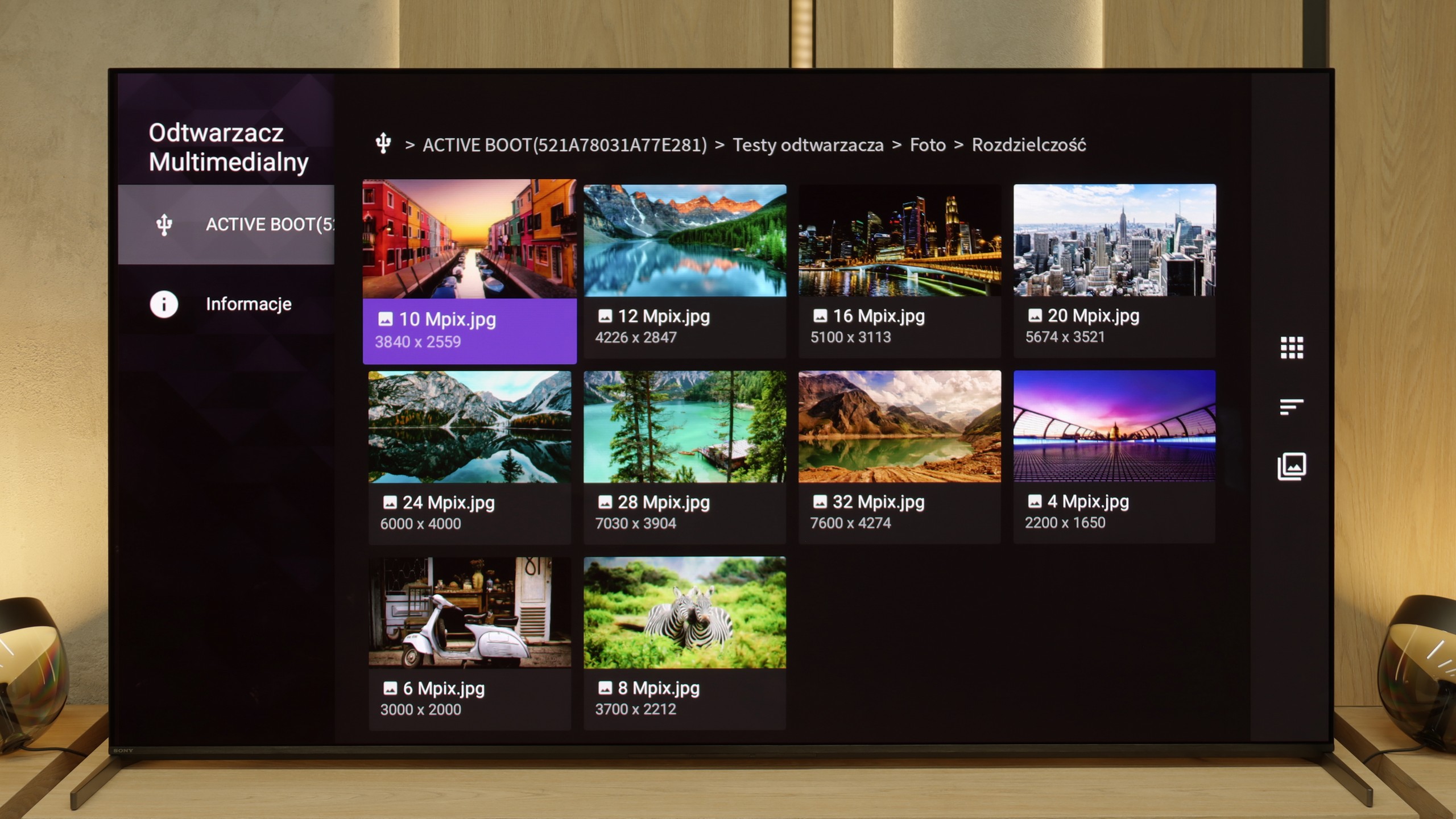
Sony A95L does quite well when it comes to playing files from USB. The built-in media player will satisfy most users – it’s easy to use and supports popular formats, making it simple to play movies, photos, or music directly from a connected USB drive. The only thing missing is the ability to change the font colour in subtitles, which can be problematic in some situations. Fortunately, the Google TV system allows the installation of other media players that offer more advanced personalisation options, so you can easily customise everything to your needs.
The Bravia 8 II performs very well with multimedia playback – the built-in player handles practically everything you would expect. Sure, there are a few formats that it doesn’t support, but that’s not a serious issue. The biggest advantage is that thanks to the Google TV system, we are not limited strictly to the default player. At any moment, we can install an alternative app that can manage files that the built-in Sony software struggles with. This makes the TV a versatile multimedia hub, ready to handle almost any format.
Apps
9.6/10
9.6/10














































Sound
7.9/10
8.5/10
- Maximum volume-86dB
- Dolby Digital Plus 7.1
- Dolby True HD 7.1
- Dolby Atmos in Dolby Digital Plus (JOC)
- Dolby Atmos in Dolby True HD
- DTS:X in DTS-HD MA
- DTS-HD Master Audio
Sony A95L offers sound that definitely stands out from most televisions. For built-in speakers, the sound is truly impressive – full, with well-balanced bass and mid-tones. Dialogues are clear, and sound effects are well distributed, making the television great for both watching movies and gaming. The Acoustic Surface Audio+ system, which converts screen vibrations into sound, creates a more spatial impression, adding extra depth to the content being viewed.
In terms of sound, the Bravia 8 II is absolute top-tier in the world of TVs. Sony once again proves that their Acoustic Surface technology is not just a marketing gimmick, but a real asset – the speakers hidden behind the screen make the entire panel act as a membrane. The soundstage is wide, dialogue sounds exceptionally clear, and the audio follows the action on screen precisely. It’s one of the few TVs where you can really do without an additional soundbar. (Of course, this is the basic one). Additionally, Sony hasn’t forgotten about formats that the competition is slowly disregarding – full DTS support is a nod to movie buffs who want to squeeze the maximum experience from films and series recorded on physical media.
Sound Quality Test
No sound test video
Acoustic Measurements
No acoustic data
86dBC (Max)
75dBC
